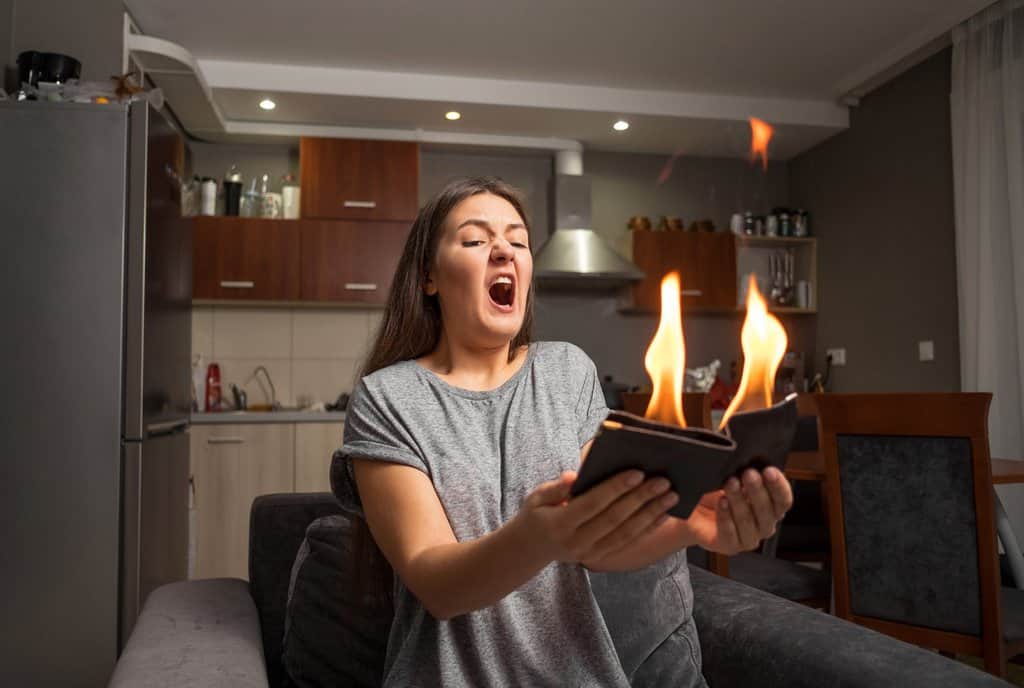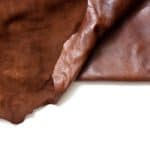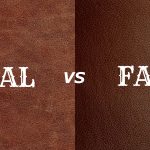If you own a real leather item, you don’t have to worry about it getting burned accidentally or catching on fire as it will most likely be fine. However, if you own a faux leather item or if you want to test if it’s fake or real, fire and heat will probably cause irreversible damage to the synthetic materials. In this article, we’ll talk about the fire-resistant properties of leather and how you can use pyrography to create leather designs.
Does leather burn or melt?
Real leather burns, but it takes quite a lot of heat to let it catch fire. Since it is an organic material, it will burn and char. However, real leather is very resistant to fire and heat, which is why it is common to see it used as welding gloves and fire-resistant aprons used in high-heat manual labor situations.
Can real leather burn?
Real leather will hardly catch fire and even if it does, real and genuine leather will only char and release a smell similar to a hair being burnt. This means it will not continue to burn if you test it out with a small lighter flame.

People often use the burning method to tell if a type of leather is real or fake. Since real leather is made from animal hide, it contains moisture which is why it is considered non-flammable. However, please do not do this to any store items as it may cause aesthetic damage that you will be responsible for.
Can fake leather burn?
Yes, Leatherette, on the other hand, burns easily. Also known as faux leather, this type of material is made from synthetic materials such as PVC. Since it’s made out of plastic, fake leather will definitely burn and start to melt if you hold a lighter and burn the corner. You’ll know if it’s fake leather when it starts to smell like burning plastic and will start catching fire.
Is burning leather toxic?
In most cases, yes. Even if real leather hardly catches fire, if you intentionally burn them, it will release toxic gases because of the process it went through such as tanning, dyeing, and fat-liquoring.
We highly suggest against burning leather intentionally in any situation. Formaldehyde is often used in the tanning process or even chromium, which can cause irritation to the lungs when it is made airborne through burning.
If you plan to use scrap leather in a fire pit, it may cause harm to everyone nearby. Leather that is corrected with a synthetic outer layer can also be dangerous as that layer is essentially plastic. Even if you are able to use it in your fire pit, it wouldn’t be any good as it would smell like burnt hair and may not even catch fire at all.
Burning faux leather is more toxic because of its main component which is plastic. Synthetic leather when burned can pollute the air and the landfills they are dumped in because of the high levels of toxic chemicals used when manufacturing them.
Please avoid burning any type of leather no matter what situation you may be facing.
What is the flash point of leather?
Leather is an incredibly fire-resistant material. It is a material that is very commonly used by firefighters, welders, metal workers, and similar types of work that exposes a person to high amounts of heat and poses fire hazards.
Leather may be seen as a luxurious material that is high maintenance, we mostly protect those materials from aesthetic damage. Grain leather is incredibly durable and its structural integrity stays solid even when its surface has aesthetic damage.
Leather can start to catch fire at around 392–414° F (200–212° C) and this can vary much more depending on specific treatments and types of leather. Some can endure higher temperatures if it has been treated for fire-resistance purposes.
What leather is most heat resistant?
Elkskin is considered to be the most heavy-duty type of natural leather because it is resistant to flame, heat, and abrasion. This is why many leather work gloves are made from elkskin because of their durability. It feels soft and supple while being thick enough to protect and provide comfort to the wearer.
Grain leather made from Elkskin is known to be one of the types of leather with the highest longevity in the market. It comes from the Elk which are in the deer family and are free-living animals that are harder to come by compared to cowhide. Nowadays, elkskin is often made from calfskin that is tanned to imitate the elkskin color, but they’re not as durable as real elkskin.
Can leather be made flame retardant after being processed?
Yes, when flame retardant is added after the tanning process of the leather, its flame retardation performance will increase. The leather production for buses, ships, and aircraft leather are especially high since they have to meet fire protection standards.
These types of leather are added some extra refatting components, retanning agents, and other flame retardant components. Basically, they are designed to be non-combustible in case there are fire emergencies. It is difficult to make your leather item flame retardant using DIY methods as it goes through many complex processes using highly toxic chemicals.
Leather designs through pyrography
If you want to etch designs on your leather item through burning, you can do so. It is similar to the process of wood burning to create complex designs and patterns using a burning tool. Many leather crafters are familiar with this method and if you want to learn more about it, here are some things you need to know about pyrography for leather designing.
What is pyrography?
Pyrography simply means writing with fire. It is a general term for the art of decorating wood or leather to create a design on the surface using a tool with a heated metallic point. Pyrographers use a soldering iron-type pen for this method and it can be an easy hobby if you want to learn it yourself.
- Local Customer Support with a one year replacement policy
What you need to know when it comes to using pyrography on leather is that leather burns faster than wood. This means that you will need to adjust the temperature of the iron pen you’re using to ensure that the burn lines are clean and it doesn’t leave unwanted stains on the leather surface.
Preparing the leather
This is a very important step when it comes to leather pyrography. If you do this right, you will be able to create detailed patterns and intricate designs on the leather material. Here’s how you can prep the leather for pyrography:
- Identify the type of leather you have. Of course, you can’t do pyrography on faux leather as it will only melt and burn.
- Make sure the leather has the skin side up.
- Wet the leather you want to use using a spray bottle and a microfiber cloth or a damp sponge.
- Let it absorb most of the water, but don’t submerge it.
- Apply pressure on the leather using a soft piece of wood or a slightly heavy object in different directions. This is going to smoothen the surface (skin side), making it more flexible.
- Leave it to dry, preferably overnight.
Now you have a piece of leather material that is ready for pyrographic designs. Remember that this process is very delicate and water is damaging to leather, so only do this if you are set on burning the leather for pyrography.
Safety measures for leather pyrography
Here are some things you need to keep in mind if you plan to do leather pyrography in order to keep yourself safe.
- Make sure that you have a pen holder as the metal tool can get really hot. Accidentally burning yourself using a metal tool is extremely painful and will leave a burn mark on your skin.
- Position the pen so that the metal tip won’t touch the table and you can comfortably set it down or grab it while working.
- Never leave your leather-burning tools unsupervised, especially when it’s burning hot.
- Clean and change the metal tips when you’re done and has cooled down.
- Work in a well-ventilated room to avoid inhaling the smoke from the leather burning process.
Conclusion
There are a lot of ways you can use the burning method on leather. You can check whether it’s real or fake, or create designs through pyrography. The most important thing is that you avoid getting hurt in the process. If you are not comfortable handling flame or heat, we don’t recommend testing whether your leather item will burn or melt as you will only be risking your safety and the condition of the leather item.
FAQ
Is leather good for sensitive skin?
Leather is not considered an allergen according to the published allergen list, but since it uses chemicals during its manufacturing process, there is still a chance that it can irritate sensitive skin. Leather allergies can manifest as your skin getting red and tender to the touch, commonly known as rashes.
If you want to know if you are allergic to leather, you can contact your dermatologist to conduct a patch test.
Can you damage leather with heat?
Surprisingly, it can be quite difficult to damage leather with heat. It takes quite a long time to damage it with a flame and it won’t catch fire unless you hold it against really high heat. Most of the time, leather only suffers from aesthetic damage if it is high-quality leather. Lower-quality leather may be structurally damaged more easily when exposed to extremely high heat.







